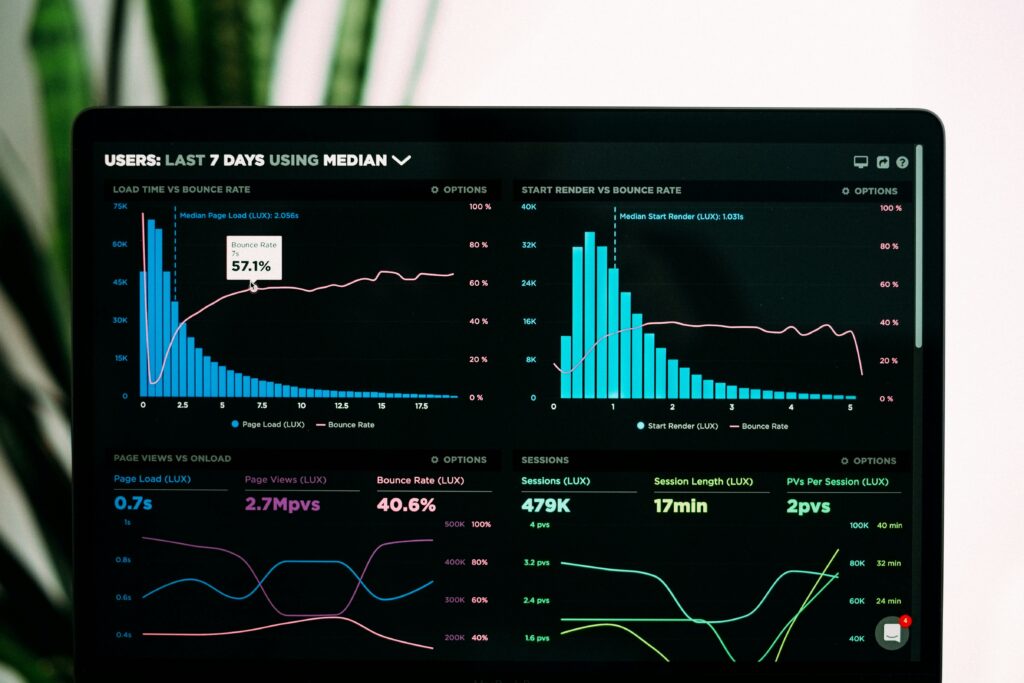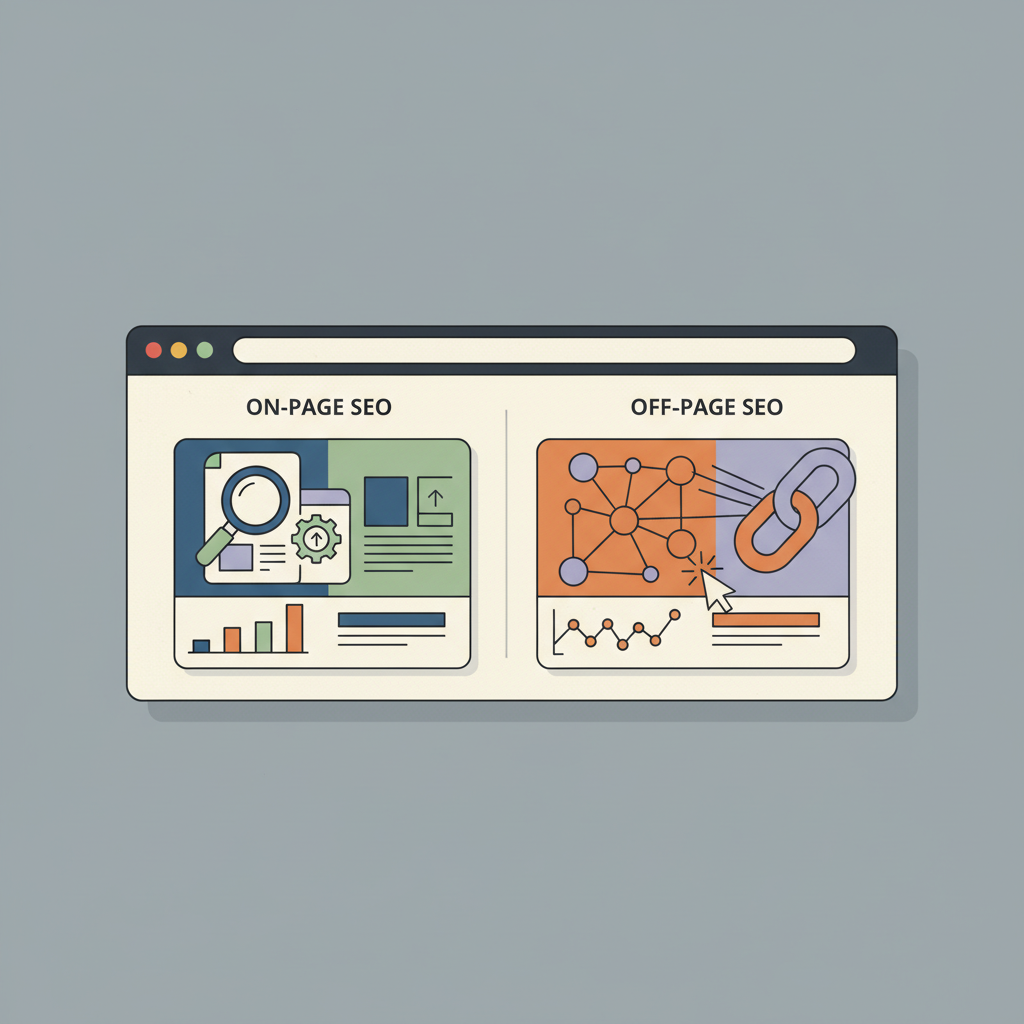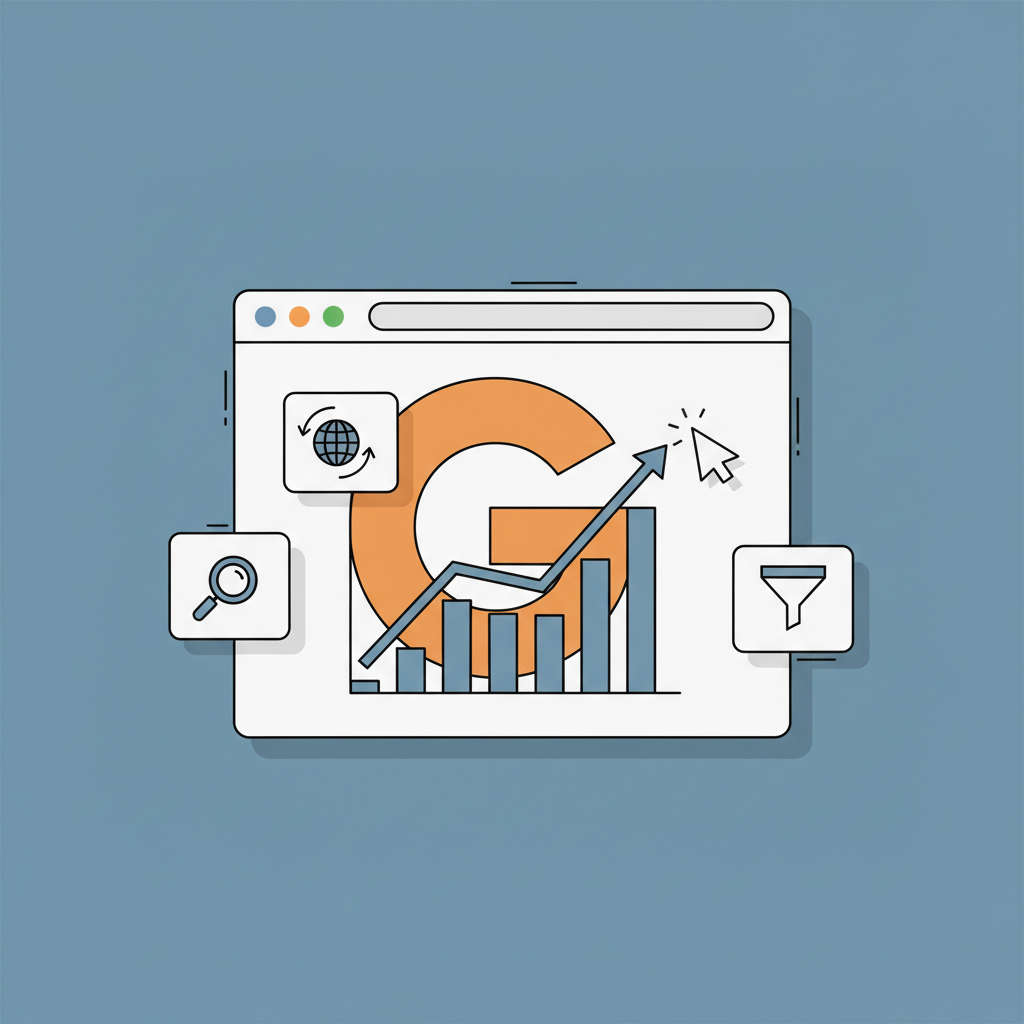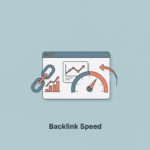Introduction: Beyond Outreach, The Power of Strategy
Many businesses pour significant resources into creating content, hitting publish, and then wondering why the needle on their organic traffic barely moves. A common pain point is producing blog posts, guides, and videos that get zero engagement and, more importantly, zero authoritative backlinks. This happens because many view link building as a separate, isolated task of simply asking other websites for links. This approach is inefficient, ineffective, and leads to wasted resources. The core problem is a failure to recognize that successful, sustainable link building isn’t born from cold outreach alone; it’s the direct result of a meticulously planned strategy.
Effective link building is not a game of numbers or a frantic scramble for any link you can get. It is a strategic discipline that sits at the intersection of great content, smart promotion, and genuine relationship-building. Without a documented strategy, your efforts will be disjointed, your results will be unpredictable, and you’ll miss out on the immense ranking potential that high-quality backlinks provide. This article serves as your comprehensive blueprint, guiding you through the essential steps to build a data-driven link building strategy that earns authoritative links, boosts your search engine rankings, and delivers measurable business results.
Foundations First: What Exactly is Link Building?
At its core, link building is the process of acquiring hyperlinks from other websites to your own. In the language of search engines like Google, a hyperlink (or backlink) is a vote of confidence. It’s one website telling its users, and by extension, search engines, “This content over here is valuable, credible, and worth your time.” The more high-quality “votes” your website receives, the more authoritative it appears, which is a primary factor in how high your pages rank in search results.
It’s crucial to differentiate between different types of links. An external link points from one domain to a completely separate domain. An internal link connects one page on your website to another page on the same site. Furthermore, links can have attributes like “dofollow” (which passes authority, or “link equity”) and “nofollow” (which typically does not). A healthy link profile contains a natural mix of these.
Think of your website as a building in a digital city. Each high-quality backlink is like a new, well-paved road leading directly to your front door from a respected landmark like city hall or a major university. The more roads you have from reputable places, the easier it is for people (and search engine crawlers) to find you and the more important your location becomes.
The ‘Why’: Why a Documented Strategy is Non-Negotiable for Growth
Jumping into link building without a documented strategy is like setting sail without a map or a compass. You might move, but you’ll likely end up lost. A formal, written strategy transforms your link building from a series of random tactics into a cohesive, goal-oriented campaign that drives real growth.
First and foremost, a documented strategy ensures team alignment. Whether your team consists of one SEO specialist or a full department of content creators and outreach managers, a shared document ensures everyone is working towards the same objectives with a clear understanding of their roles. This alignment prevents wasted effort and maintains brand consistency in your messaging and outreach.
Second, it dramatically improves efficiency and enables accountability. A strategy outlines your target websites, the types of content you’ll create, and the metrics you’ll use to measure success. This allows you to prioritize high-impact activities and track progress against clear key performance indicators (KPIs). According to industry studies, marketers who document their strategy are significantly more likely to feel their efforts are successful. This documented success is precisely what you need to secure a budget and achieve buy-in from leadership. When you can present a clear plan that connects link building activities to overarching business goals like lead generation and revenue, you transform it from a cost center into a predictable growth engine.
Your 9-Step Blueprint to Building a Results-Driven Link Building Campaign
Building a successful link building campaign requires a systematic, repeatable process. Follow these nine steps to create a strategy that earns high-quality links and drives organic traffic.
Step 1: Define Your Mission and Business Goals
Your link building efforts must be tied to tangible business outcomes. Don’t just aim to “get more links.” Instead, use the SMART framework (Specific, Measurable, Achievable, Relevant, Time-bound) to set clear goals. For example, a weak goal is “Improve our SEO.” A SMART goal is “Increase organic traffic to our key service pages by 20% in the next six months by acquiring 15 new high-authority (DR 50+) backlinks.”
Connect your link building objectives directly to your company’s overarching mission. If your business goal is to become the leading authority in your niche, your link building goal should be to earn links from the most respected publications and educational institutions in that field.
Step 2: Pinpoint Your Target Audience and Linking Personas
You already know your customer personas, but for link building, you also need “linking personas.” These are profiles of the people who can give you links: journalists, bloggers, editors, resource page curators, and industry influencers. Go beyond their job titles. What are their pain points? What kind of content do they share and link to? Are they looking for original data, expert commentary, or comprehensive guides to share with their audience? Understanding their motivations is key to crafting content and outreach that resonates with them.
Step 3: Conduct a Backlink Audit and Competitor Analysis
Before building new roads, you need to inspect the ones you already have. Conduct a backlink audit of your own website to understand your current profile. Identify your strongest pages that naturally attract links and look for any potentially toxic or spammy links that might need to be disavowed. Next, perform a thorough competitor analysis. Identify 3-5 of your top organic search competitors and analyze their backlink profiles. Find out who links to them but not to you—this is your low-hanging fruit. Analyze what types of content earn them the most links. This “link gap analysis” will reveal their strategies and provide a roadmap for your own.
Step 4: Ideate and Create Link-Worthy Content
This is the heart of your strategy. You cannot build links without having something valuable to link to. This is called a “linkable asset.” Your competitor analysis will inform what works, but your goal should be to create content that is significantly better than what currently exists. This is often called “10x content.”
| Linkable Asset Type | Description | Link-Attraction Potential | Effort to Create |
|---|---|---|---|
| Original Research/Data Study | A unique study with proprietary data, surveys, or analysis. | Very High | High |
| Free Online Tool or Calculator | An interactive tool that solves a specific problem for your audience. | Very High | High |
| The Ultimate Guide | A comprehensive, in-depth resource covering a topic completely. | High | Medium-High |
| Infographics & Visual Assets | Visually appealing data or process explanations that are easily shareable. | Medium-High | Medium |
| Expert Roundup | A post featuring quotes and insights from multiple experts on a single topic. | Medium | Medium-Low |
Focus on creating assets that your linking personas will find irresistible because it makes them look good and provides immense value to their audience.
Step 5: Identify Link Prospects
With your linkable asset created, it’s time to build a list of potential websites to get links from. This process is called prospecting. Use various methods to find relevant prospects:
- Competitor Backlinks: Start with the list of sites linking to your competitors.
- Advanced Google Searches: Use search operators like
"keyword" + inurl:resourcesor"keyword" + "guest post by"to find specific opportunities. - Content Explorers: Use SEO tools to find articles that have recently linked to content similar to yours.
- Brand Mentions: Find websites that have mentioned your brand but haven’t linked to you.
Organize your prospects in a spreadsheet or project management tool like Notion or Asana, tracking the website, contact person, and outreach status.
Step 6: Develop Your Outreach Strategy
Your outreach is your pitch. Avoid generic, templated emails at all costs. Your goal is to build a genuine connection, not just ask for a link. A successful outreach strategy has three key components:
- Personalization: Show that you’ve actually read their content. Mention a specific article you enjoyed or a point they made on social media.
- Value Proposition: Clearly and concisely explain why your content is valuable to their audience. How does linking to your resource benefit them?
- Clear Ask: Make it easy for them. Suggest a specific place in one of their existing articles where a link to your resource would be a natural fit.
Step 7: Execute Your Outreach Campaign
Begin sending your personalized emails. Keep your emails short, professional, and focused on the value you provide. Don’t be discouraged if you don’t hear back immediately. It’s standard practice to send one or two polite follow-up emails spaced about a week apart. Track all your communications meticulously. Note who you contacted, when you contacted them, and their response. This prevents you from sending duplicate emails and helps you refine your approach over time.
Step 8: Track and Measure Your Results
Link building requires constant measurement to justify its ROI. Track these key metrics:
- Number of New Links Acquired: The raw count of new backlinks.
- Link Quality: The authority of the linking domains (measured by metrics like Domain Rating or Domain Authority).
- Referral Traffic: How many visitors are clicking on your new links? Use Google Analytics to monitor this.
- Keyword Ranking Improvements: Are the pages you’re building links to ranking higher for their target keywords?
- Organic Traffic Growth: The ultimate goal. Is your overall organic traffic increasing?
Regularly report on these metrics to demonstrate the impact of your campaign.
Step 9: Amplify and Repurpose Your Content
Your work isn’t done once you’ve built a few links. Amplify your linkable asset to attract natural links over time. Share it on social media, promote it in your email newsletter, and mention it in relevant online communities. Consider repurposing the content into different formats. An ultimate guide can become a series of blog posts, an infographic, a webinar, or a short video. This extends the life of your content and opens up new avenues for earning links.
Common Pitfalls in Link Building and How to Avoid Them
Even with a solid plan, it’s easy to fall into common traps. Being aware of these pitfalls is the first step to avoiding them and ensuring your strategy remains effective and ethical.
Mistake 1: Focusing on Quantity Over Quality
In the early days of SEO, link building was a numbers game. Today, the opposite is true. One single, editorially placed link from a highly authoritative and relevant website is worth more than hundreds of low-quality links from spammy directories or irrelevant blogs. Focusing on quantity can not only waste your time but also actively harm your site, potentially leading to a manual penalty from Google.
Solution: Prioritize relevance and authority above all else. Before pursuing a link, ask yourself: “Is this website a trusted resource in my industry?” and “Would I want a link from this site even if Google didn’t exist?” If the answer to either is no, move on.
Mistake 2: Ignoring Content Creation
This is the most common mistake of all: trying to build links without a valuable asset. This leads to outreach emails that essentially say, “Hi, can you link to my commercial product page?” This approach rarely works because it offers no value to the website owner or their audience.
Solution: Implement the content-first rule. Never begin outreach until you have a genuinely remarkable piece of content—a linkable asset—to promote. Your outreach should be about sharing something amazing you’ve created, with the link being a natural byproduct of its value.
The Modern Link Builder’s Toolkit: Essential Tools
A successful link building campaign relies on powerful tools to streamline research, outreach, and analysis. Here are some essential tools, categorized by their primary function in the link building process.
| Category | Tool | Primary Use Case in Link Building |
|---|---|---|
| Research & Planning | ChatGPT | Brainstorming linkable asset ideas, generating topic clusters, and outlining content briefs. |
| Research & Planning | Google Analytics | Identifying your most popular pages to build links to and tracking referral traffic from new links. |
| Content Creation | Canva | Designing professional-looking infographics, charts, and other visual assets that attract links. |
| Content Creation | Grammarly | Ensuring your linkable assets and outreach emails are polished, professional, and error-free. |
| Project Management | Notion | Creating a comprehensive database to track link prospects, outreach status, and content production. |
| Project Management | Trello | Using Kanban boards to visually manage the link building workflow from prospecting to link acquired. |
| Team Collaboration | Slack | Facilitating real-time communication within the SEO/content team to coordinate outreach efforts. |
Using a combination of these tools can significantly increase the efficiency and effectiveness of your link building campaigns, allowing you to focus more on strategy and relationship-building.
Expert Insights: What’s Next for Link Building?
To stay ahead, it’s crucial to understand the trends shaping the future of link building. Here are answers to two pressing questions about the industry’s evolution.
Question: How is AI changing link building?
Answer: Artificial intelligence is becoming a powerful co-pilot for link builders. AI tools like ChatGPT and Claude are excellent for accelerating tedious tasks. They can help generate massive lists of potential link prospects, brainstorm creative ideas for linkable assets, and even draft initial outreach email templates. However, AI cannot replace the most critical element: human expertise and genuine relationship-building. Use AI for efficiency in research and first drafts, but rely on human strategists for quality control, deep personalization of outreach, and navigating the nuanced conversations required to secure high-value links.
Question: What is the biggest trend to watch?
Answer: The biggest trend is the continued shift away from transactional link acquisition towards holistic brand authority building. This means focusing on digital PR tactics—earning high-quality media mentions that happen to include a link. Instead of just building links to a specific page, the goal is to build the overall authority and trustworthiness of your entire domain. This involves creating thought leadership content, publishing original research, and getting key people in your company featured as experts. Additionally, the strategic importance of internal linking continues to grow as a way to distribute authority throughout your own site.
Frequently Asked Questions about Link Building
Here are direct answers to some of the most common questions about link building.
Q1: What’s the difference between dofollow and nofollow links?
A: A “dofollow” link is a standard hyperlink that passes authority (or “link equity”) from the linking page to the destination page. These are the types of links that directly help improve your search engine rankings. A “nofollow” link has a special tag (rel="nofollow") that tells search engines not to pass authority. While they don’t directly boost rankings, they can still be valuable for driving referral traffic and building brand awareness.
Q2: How many backlinks do I need to rank?
A: There is no magic number. The quantity and quality of backlinks needed to rank depend entirely on the competitiveness of your target keyword. For a low-competition keyword, you might rank with just a few good links. For a highly competitive term, you may need hundreds of links from authoritative sites. The best approach is to analyze the backlink profiles of the top-ranking pages for your target keyword to set a realistic goal.
Q3: Is guest posting still a good link building strategy?
A: Yes, but only when done correctly. Guest posting purely for the sake of getting a link on low-quality sites is a spammy, outdated tactic. However, strategic guest posting on reputable, relevant industry blogs is an excellent way to build authority, reach a new audience, and earn a valuable, editorially-placed backlink.
Q4: How long does it take to see results from link building?
A: Link building is a long-term strategy. While you might see some referral traffic immediately after a link goes live, it can take several weeks or even months for Google to crawl, index, and factor that new link into its ranking algorithms. Significant improvements in organic traffic and rankings from a consistent link building campaign typically take 6-12 months.
Conclusion: Turn Your Links Into Your Strongest Asset
A powerful backlink profile is one of the most durable competitive advantages in SEO. As we’ve explored, achieving this is not about finding shortcuts or sending mass emails. It’s about adopting a systematic, strategic approach that begins with understanding your goals and creating genuine value for both users and the websites you want links from. A documented strategy transforms link building from a series of unpredictable tactics into a reliable, revenue-generating asset.
This blueprint provides the framework, but the success lies in the execution. Treat your strategy as a living document, constantly refining it based on data and results. By doing so, you will build more than just links; you will build authority, trust, and a sustainable source of organic growth for your business. Start building your strategy today and turn your links into your strongest marketing asset.







